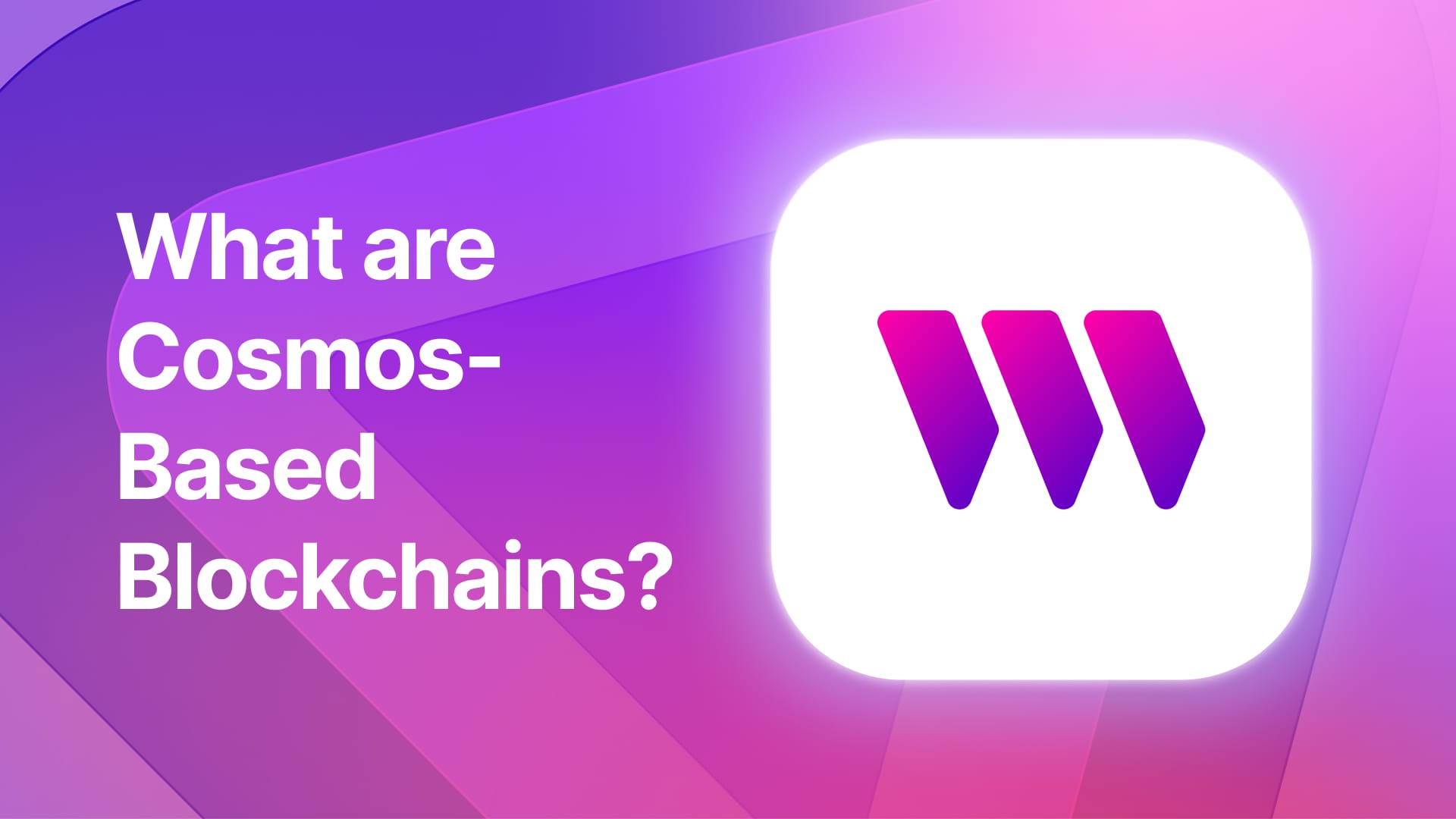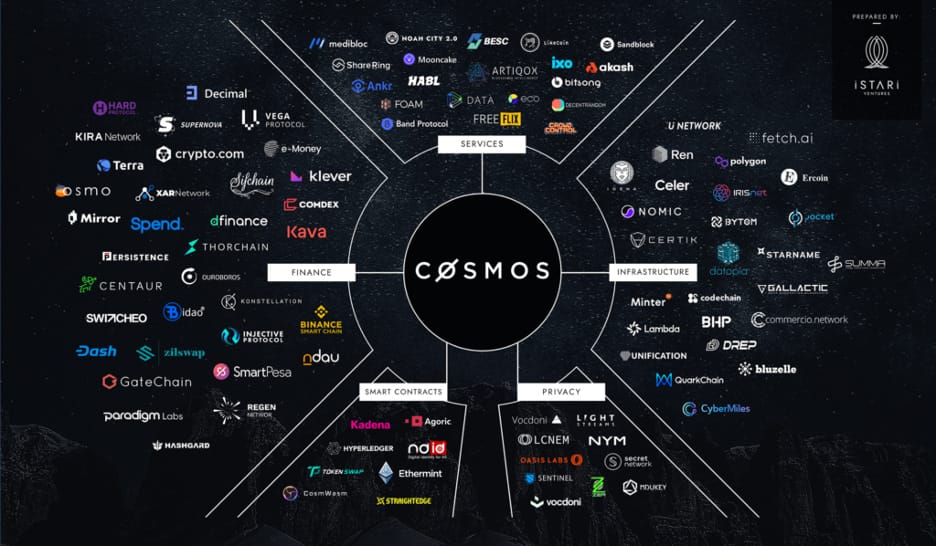What are Cosmos-Based Blockchains?

The emergence of smart contracts has fostered the rise of decentralised applications (dApps) built on top of public blockchains. This milestone in blockchain technology opened up an unprecedented avenue for developing applications resistant to censorship and running automatically when predefined conditions are met.
However, the boom was soon tempered by recognizing certain limitations. Smart contracts encountered substantial challenges within the infrastructure that powered them. Scalability and sovereignty swiftly emerged as significant obstacles for decentralised applications, demanding innovative solutions.
In this context, the Cosmos ecosystem was conceived to address these blockchain constraints and provide an interoperable environment to promote an "internet of blockchains". Cosmos was designed as a framework that aims to furnish the appropriate set of tools to create interconnected, scalable and sovereign blockchains.
What is the Cosmos Ecosystem?
Cosmos is a decentralised network of autonomous, scalable and interconnected blockchains, currently hosting around 50 chains and more than 240 apps and services. Conceived as a framework to facilitate blockchain scalability and interoperability, Cosmos is often labelled as a Layer 0 blockchain, due to its provision of essential tools for establishing Layer 1 blockchains.
These Layer 1 blockchains are commonly referred to as application chains within the Cosmos Ecosystem. Consequently, application chains can be defined as customizable solutions tailored to address specific challenges.

Cosmos Architecture
The Cosmos ecosystem encourages the proliferation of application chains within its ecosystem because its goal is to promote the internet of blockchains. To support this vision, Cosmos offers an array of open-source resources that empower developers in their pursuit of blockchain innovation.
Overall, the Cosmos architecture encompasses:
- Cosmos SDK: The Cosmos SDK stands as a pivotal component of the Cosmos architecture, providing developers with a versatile framework, endowed with composable modules, to facilitate the development of customizable application chains swiftly and efficiently.
- Tendermint Consensus: Tendermint consists of a Byzantine Fault-Tolerance consensus algorithm, that empowers applications to achieve synchronised replication across multiple machines. Tendermint consensus is achieved when at least two-thirds of active nodes operate reliably and consistently, without encountering unexpected or unpredictable failures. Furthermore, it offers instant finality, eliminating the need for transaction confirmation before considering it valid once it has been included in a block and added to the chain. Currently, Tendermint serves as one of the most widely adopted BFT consensus engines for Proof of Stake (PoS) blockchains.
- Inter-Blockchain Communication Protocol (IBC): The IBC is a protocol that enables seamless and secure communication between diverse blockchains. It consists of two distinct layers, a transport layer with the infrastructure to establish secure connections and data packet authentication, and the application layer, employed to define how data packets should be packaged and interpreted by the involved chains. The IBC application layer offers a resourceful framework for developing an extensive array of cross-chain applications, including without being exhaustive, fungible token and non-fungible token transfers and Oracle data feeds integrations.
- CosmWasm is designed to provide developers with a secure and efficient environment for creating, testing, and executing smart contracts. With the aim of harnessing the speed of WebAssembly and the robustness of Rust, CosmWasm was developed as a module to be plugged into the Cosmos SDK. In light of this strategic approach, decentralized applications crafted with CosmWasm are chain agnostic.
How does Cosmos Address Blockchain Constraints?
The establishment of the Cosmos ecosystem aims to maximize the potential of blockchain technology by enhancing its scalability, sovereignty and interoperability. Cosmos' cutting-edge architecture and tools help to effectively address these problems.
Building on Cosmos-based chains
Thirdweb supports several Cosmos-based chains, primarily focusing on those that are EVM-compatible. One notable example is Kava, which is a Layer 1 blockchain built on the Cosmos SDK and offers full Ethereum Virtual Machine (EVM) compatibility. This allows developers to deploy Ethereum-based decentralized applications (dApps) on Kava while leveraging the benefits of the Cosmos ecosystem, such as interoperability with other Cosmos-based chains
By utilizing thirdweb's comprehensive suite of developer tools, you can seamlessly deploy, manage, and scale your DeFi projects on Kava. With features like front-running resistance, zero gas fees, and cross-chain capabilities. Explore the potential of building on Kava with thirdweb and join the growing ecosystem of developers.

